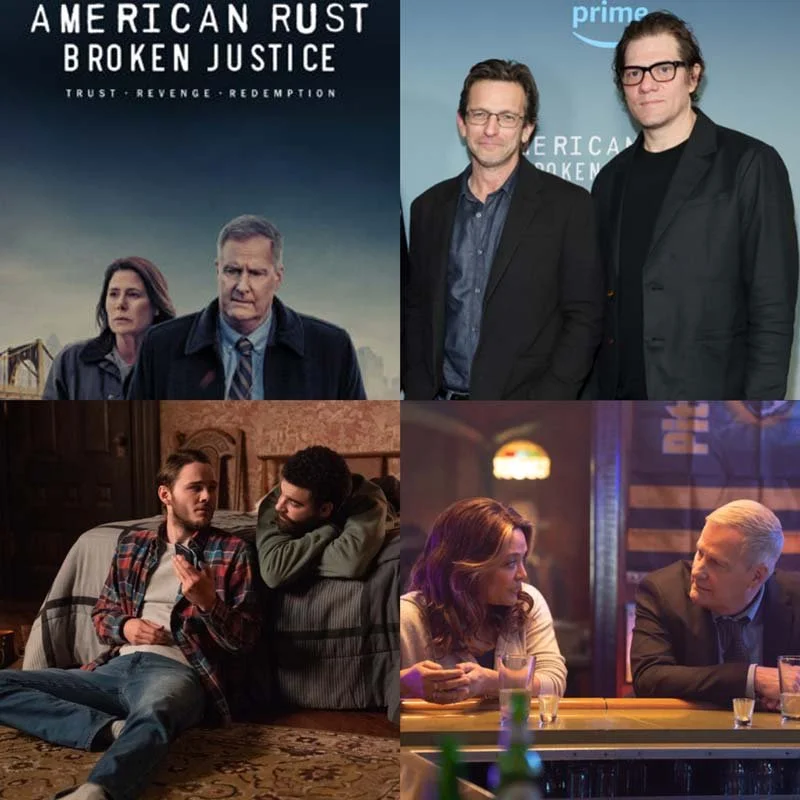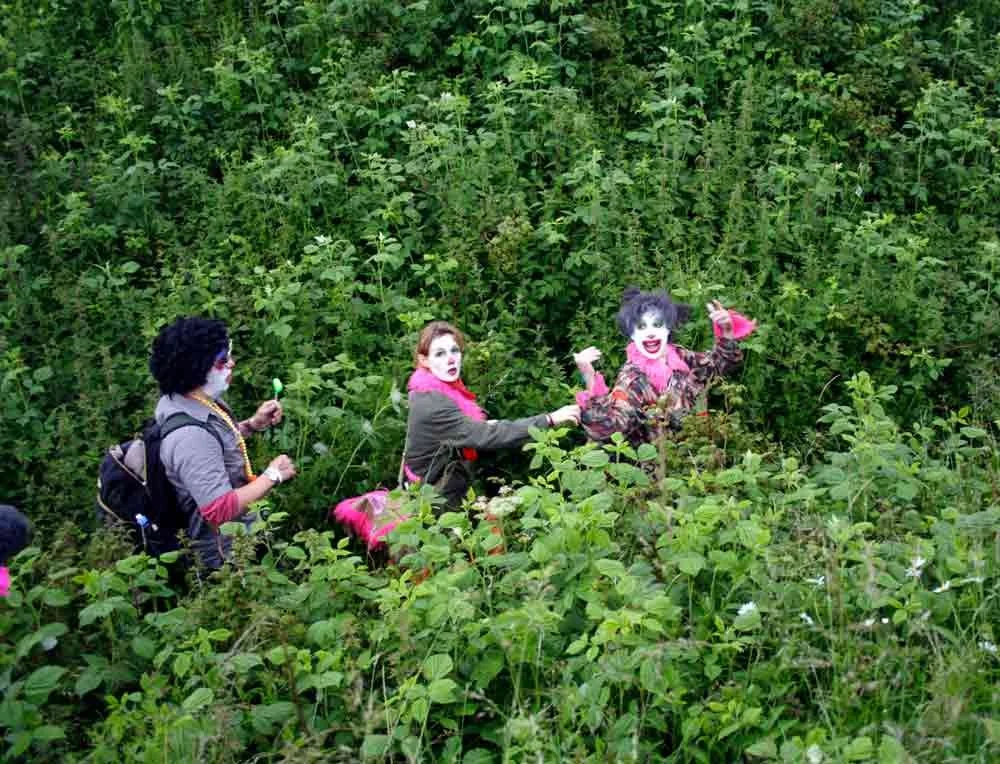Dr. Anna Lembke is professor of psychiatry at Stanford University School of Medicine and chief of the Stanford Addiction Medicine Dual Diagnosis Clinic. A clinician scholar, she has published more than a hundred peer-reviewed papers, book chapters, and commentaries. She sits on the board of several state and national addiction-focused organizations, has testified before various committees in the United States House of Representatives and Senate, keeps an active speaking calendar, and maintains a thriving clinical practice. Dr. Lembke explores how to moderate compulsive overconsumption in a dopamine overloaded world in her NYTimes bestselling book Dopamine Nation: Finding Balance in the Age of Indulgence. Her previous book Drug Dealer, MD – How Doctors Were Duped, Patients Got Hooked, and Why It’s So Hard to Stop was highlighted in the New York Times as one of the top five books to read to understand the opioid epidemic.
ANNA LEMBKE
I'm an addiction psychiatrist. When I use the word addiction, I'm really talking about having crossed the line from basically healthy use with an occasional slip to somebody who's really caught in the vortex of compulsive overconsumption with consequences and typically needing help from others, whether or not they are professionals, but feeling like, Oh boy, this is unmanageable, as they say in Twelve Steps, "My life has become unmanageable." It's one of the main points of my book, Dopamine Nation that we are living in this addictogenic world where almost all human behaviors and substances have become drugified in one way, right? Social media has drugified human connection. Our food has been drugified by the addition of salt, fat, sugar. Reading is drugified, the way that these genre novels fill this sort of gaping hole of compulsive consumption among their readership, people always wanting more. They're written now in a formulaic way to make sure that every chapter ends on a cliffhanger. These series are written so that the first book ends on a cliffhanger. You can't not go to the second one. The Netflix binges, where you get the next episode automatically fills unless you do something to stop it. You know, these are all little ways in which our lives have been engineered to keep us clicking and swiping and eating and smoking and drinking to the detriment of the globe. I mean, 70% of global deaths are due to diseases caused by modifiable risk factors, and the top three are smoking, inactivity, and overeating or diet. So we're literally titillating ourselves to death.
THE CREATIVE PROCESS
So In your book Drug Dealer, MD, you're write about addictions and the opioid crisis, and it's really eyeopening on so many levels. Just help us break down the opioid crisis. I don't know if the statistic is still true that around 80% of opioid use is in America?
LEMBKE
If you look at hydrocodone products, which are a specific opioid, I believe the data that 80% of the world's hydrocodone is consumed by the United States. So that's huge. If you look at opioids overall, all different types of prescription opioids or pharmaceutically manufactured opioids, I think 30% of the world's opioids are consumed by the United States, which is still a very large and disproportionate share. So, yes, the United States is a country in which more opioids are prescribed and more opioids are consumed than any other country in the world.
Well, it's complicated, but it goes back to the 1980s, and the importation of the hospice movement here in the United States. The hospice movement was this movement to try to help people at the very end of life, and this acknowledgment that people were dying in agony, and perhaps we needed to be more liberal with opioid prescribing at the end of life. And it was imported from Europe, came to the US in the eighties and was, I think appropriately so, championed by many pain specialists in this country who realized that we weren't doing enough for our aging and disabled populations who were dying in a great deal of distress.
Unfortunately, what happened was that some of the messages to advocate for more liberal use of opioids at the end of life got co-opted by the opioid pharmaceutical industry, Purdue Pharma, the maker of OxyContin, and others, who then began using that same message to teach doctors that opioids were safe in any kind of pain situation, even a minor ankle sprain, or a wisdom tooth removal, or a tummy ache, or really any reason at all. And they did that by essentially adulterating the science and masking a few not very robust data points as robust science, when in fact they were really just marketing messages. For example, this idea that less than 1% of patients will get addicted to opioids as long as they're being prescribed by a doctor. Or this idea that patients who are taking opioids who look like they're getting addicted aren't really addicted. They're pseudo-addicted, which is to say they're in pain and need more opioids to be prescribed by the doctor, not fewer.
*
Well, news is fascinating because news is now engineered to be addictive, right? It's that sort of 24/7 sensational presentation through this visual medium. And what's so interesting about our consumption of news is how little new information we actually glean per unit of time we spend getting our news, especially if we're getting it from social media. But what happens is that it really engages our novelty seeking and our desire for dopamine, which looks for something similar, but with just a slight variation. So that really where we get to a point where we're not chasing new information, although we tell ourselves that, we're really chasing dopamine and wanting to experience the emotional reaction that we get from certain types of news stories, whether it's a validation of our own beliefs and values or that kind of communal outrage when people experience an emotion at the same time that other people are experiencing an emotion, that releases quite a lot of do meaning because of course we're social tribal creatures, and that's one of the ways that we wire together is that we have the same emotional reaction together, and that's very reinforcing.
*
So let's look at historical trends. One very interesting thing is that women, for many generations, were relatively insulated from the problem of addiction, but in the last two generations, or for the last 30 years or so, we've seen vastly increased rates of addiction to drugs and alcohol among women. Alcohol is one example. So whereas previously the ratio of men with alcohol addiction to women with alcohol addiction has been between five-to-one and two-to-one. With millennials, starting with the millennial generation, it's now one-to-one. So women in the United States are as likely to be addicted to alcohol as men and other drugs are quickly following suit.
So this is an important and really seismic shift in the history of addiction in the United States and other developed countries. If you look at all drugs across the world, the only drug which women are more likely to be addicted to than men is benzodiazepines – Xanax, Valium, Klonopin. That's also interesting, and you can extrapolate a few assumptions. One of them is that women are also more likely to go and seek medical help for medical conditions. And benzodiazepines are very often obtained through a medical prescription. There's some initial data suggesting that social media is especially dangerous for women and young girls. And I have certainly seen in my practice that video games and pornography appear to be especially prevalent among boys and young men. So I think there are gender differences, and there's both my clinical experience and also some epidemiologic data that suggests those differences as well.
*
There's a ton of work now looking at how we can re-engineer or patch the AI that's currently sort of driving these interfaces to make it easier for people to manage their consumption. But so far there's not a lot of evidence that it's working. So the time management things, unfortunately, people just tend to override those or not want to look at the amount of time that they're spending on their devices. So I'm not seeing a lot of encouraging stuff there. And basically what you have is you have a fundamental structural problem. These technologies are engineered literally to keep us clicking and swiping. You can't ask them...in a way, it's very difficult for them to have their product that's not engaging. Now there's a big push to do this, to see, Okay, well what if we get rid of the likes, or what if we eliminate the bottomless scrolls? Or what if we get rid of the alerts and the push notifications, or what if we go to grayscale and make the images...? And I think all those can work as nudges and be helpful, but I think we also need to start looking more proactively at having time where we literally are just not touching our device. Distance from the actual device itself. And so I think there's some movement in that direction as well.
*
I think just stay open and curious and don't shy away from doing things that are hard. And don't shy away from asking the hard questions. And I guess one of the things that I really do recommend to young people is to not necessarily be looking always over the fence you know, to try to find their passion or the thing that they were meant to do, but instead, you know, stop and remain still and look around at what is already in their lives that they could do to make a contribution.
I think many times, we've had this kind of restless sense of, Oh, I need to go and find my passion, or I need to go and do this, or do that when there's something right in front of us that is already calling us or we're already set up to offer, and we sort of minimize it. And yet when we really immerse ourselves in the lives that we've been given you know, we can make an incredibly valuable contribution in an iterative way, day after day, and really find a lot of purpose and meaning there.
This interview was conducted by Mia Funk and Katherine Ritter with the participation of collaborating universities and students. Associate Interviews Producer on this podcast was Katherine Ritter. Digital Media Coordinators are Jacob A. Preisler and Megan Hegenbarth.
Mia Funk is an artist, interviewer and founder of The Creative Process & One Planet Podcast (Conversations about Climate Change & Environmental Solutions).



















































